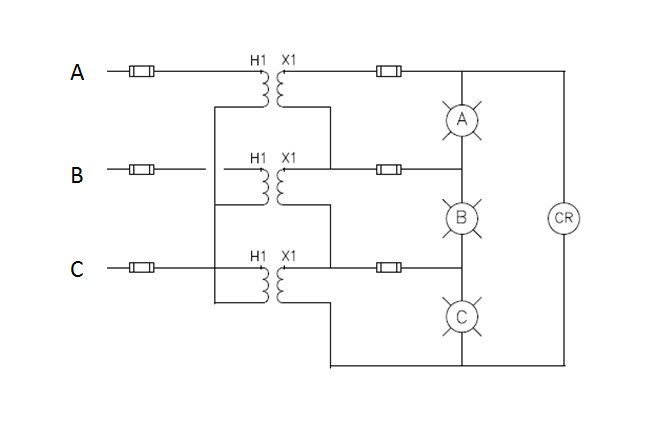Hello,
I have a ground detection system as shown below. It's on one of the 480V MCC's we have and it works through having 3 PT's with Wye-OpenDelta configuration. It basically works by detecting overvoltage between any two phases in which case a single phase ground would occur. My quesiton is: What's the proper way of setting the overvoltage relay "CR" as shown below. That is, what determines the overvoltage "pickup" settings? Are there any standards/industry guidelines out there specificying this? In this particular case, the PT's are 480V-120V, and the relay "CR" is a meter relay that has scale 0-300V. I noticed that most of the relays are set for overvoltage pickup somewhere around 150V, but not sure how this setting is dervied. Anyone can help explain this to me? Thanks.

I have a ground detection system as shown below. It's on one of the 480V MCC's we have and it works through having 3 PT's with Wye-OpenDelta configuration. It basically works by detecting overvoltage between any two phases in which case a single phase ground would occur. My quesiton is: What's the proper way of setting the overvoltage relay "CR" as shown below. That is, what determines the overvoltage "pickup" settings? Are there any standards/industry guidelines out there specificying this? In this particular case, the PT's are 480V-120V, and the relay "CR" is a meter relay that has scale 0-300V. I noticed that most of the relays are set for overvoltage pickup somewhere around 150V, but not sure how this setting is dervied. Anyone can help explain this to me? Thanks.


